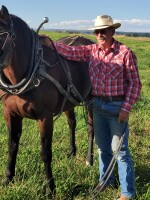The storm that came through the Four Corners last Thursday and Friday dropped significant rain and snow in the Region. As of Monday, December 6th, according to the NRCS Snotel Snow/ Precipitation Update Report, the snowpack in the Dolores San Miguel, San Juan and Animas River Basins averaged less than 30% of normal. As of yesterday though, the average snowpack in these three basins was 73% of normal. However, the Southeastern Utah snowpack went from 0% of normal to 79% over the past week.
Grocery prices are climbing at their fastest pace since 2008, with beef, pork and poultry leading the charge, up nearly 13% since last November, according to the latest Consumer Price Index. The report showed that grocery prices were 6.4% higher than a year ago, and is a significant part of a U.S. inflation rate of 6.8%, the sharpest 12-month increase since June of 1982. The report shows that prices of beef roasts and steaks rose roughly 25%, bacon 21% and chicken 9.2% in the past year, and prices were up for virtually everything on a consumer’s grocery list, including apples and whole milk up about 7%, but potatoes and cheese were down modestly. The White House pinned the blame for surging meat prices on meatpackers “taking advantage of their market power to raise prices while increasing their own profit margins.” Reports from Tyson Foods, JBS, Marfig and Seaboard, indicate that their gross profits collectively have more than doubled during the pandemic, and their net income shot up 500%, according to Brian Deese, Director of the National Economic Council. The Council points out that beef, pork and poultry price increases accounted for a quarter of the overall increase in grocery prices.
Some folks like to have a few chicken around because they like them as productive pets that produce eggs, keep the grasshopper population in check, and are pretty good at reprocessing table scraps. Well now, the company Do Good Foods has come up with a business plan to produce carbon reduced chickens that will be partially raised on food waste diverted from grocery stores. The USDA approved label states that each chicken saves four pounds of food waste from going into the landfill, while also reducing three pounds of greenhouse gas emissions. The company now has one facility in Fairless Hills, Pa., where it can convert 160 tons of retail food waste per day into components for chicken feed, which is then used by contract growers to raise the birds. The company expects to begin marketing their low carbon chickens at major national retailers in February at prices significantly below organic, but higher than conventionally raised birds.
Other consumer packaged goods companies are making climate claims to appeal to millennial and Gen Z consumers who are very concerned about the environmental impact of products they buy. Some companies have made ambitious climate pledges. For example, in 2022, Whole Foods Market will begin to sell Cascadian Farms climate-smart cereal made with Kernza, a perennial grain that helps sequester more carbon, and the company will also sell grains that use agriculture practices and farming processes that help address soil health. Horizon Organic dairy also claims it will be carbon positive by 2025.
Russian Author and playwright Anton Chekhov wrote “People don’t notice whether it’s winter or summer when they’re happy."



